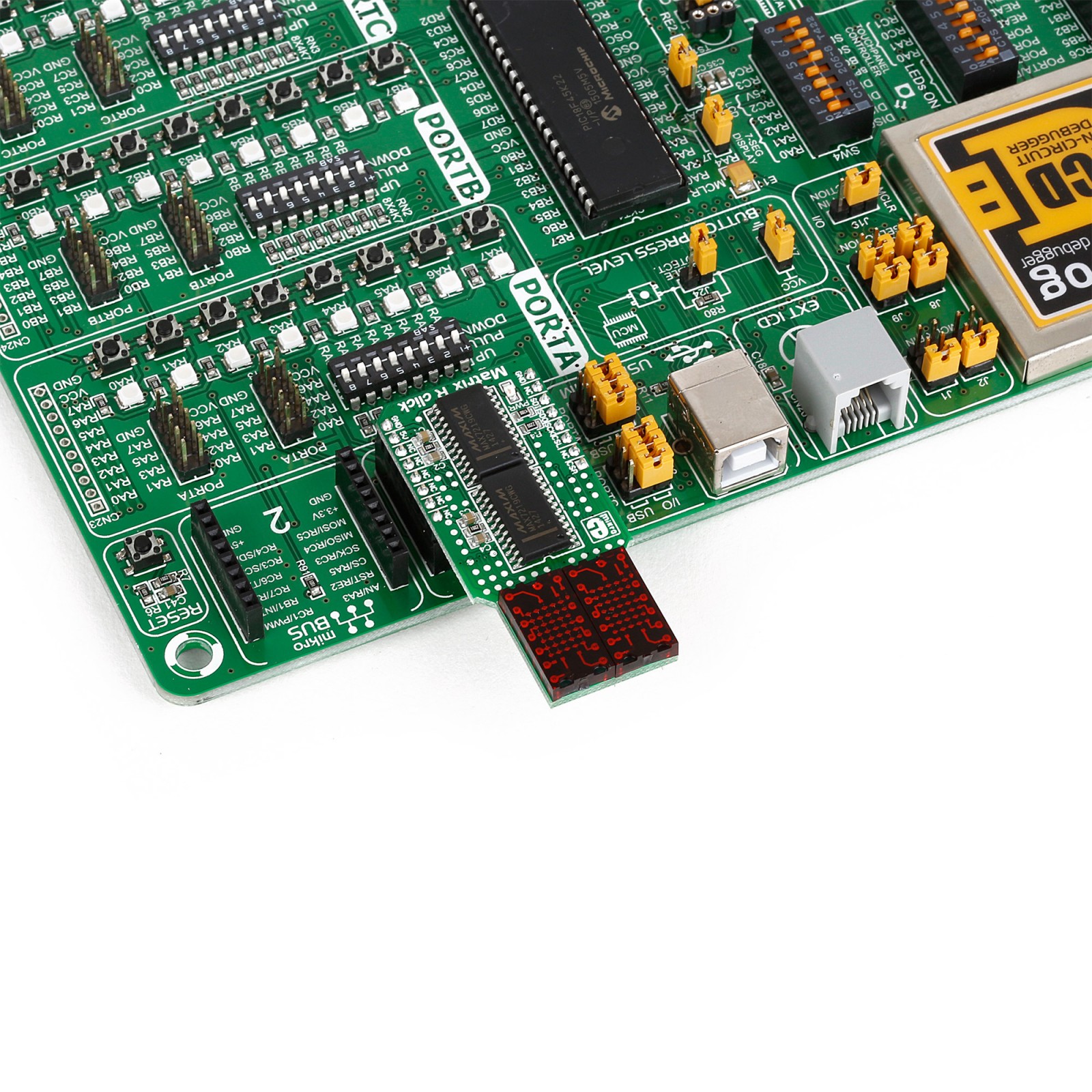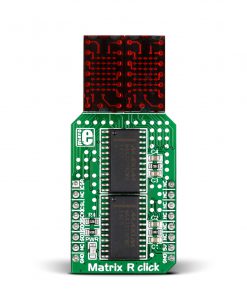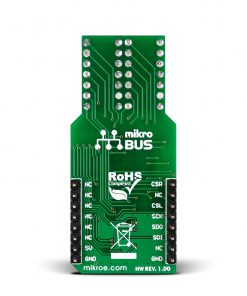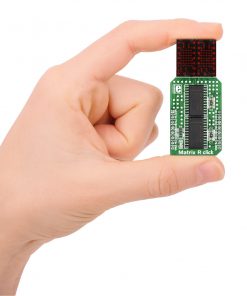Matrix R Click
R755.00 ex. VAT
Matrix R Click is a compact add-on board that controls two onboard red 5×7 matrices. This board features two MAX7219, serially interfaced, 8-digit LED display drivers from Analog Devices. The active area of each matrix is 7.62mm high and 5.08mm wide. The 7×5 is a standard resolution for displaying ASCII characters, so the Matrix R Click is essentially a dual-character display capable of showing letters in more readable typefaces compared to a 14-segment display. This Click board™ makes the perfect solution for the development of user interfaces, graphical displays of information, and similar applications that display clearly visible low-resolution graphics or text.
Matrix R Click is supported by a mikroSDK compliant library, which includes functions that simplify software development. This Click board™ comes as a fully tested product, ready to be used on a system equipped with the mikroBUS™ socket.
Stock: Lead-time applicable.
| 5+ | R717.25 |
| 10+ | R679.50 |
| 15+ | R641.75 |
| 20+ | R617.59 |

















